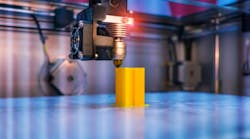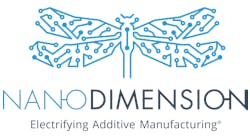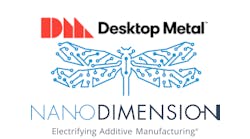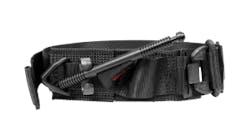A new MakerBot study on 3D-printing habits and investment plans found that 77% of respondents increased their investment in 3D printing, and 69% are expected to do so this year.
The results represent an increased eagerness to both use and spend on 3D printing as it demonstrates its ability to accelerate product development and transform businesses. We’re not surprised, having studied the additive-manufacturing space for some time, but we wanted to learn more, so we connected with MakerBot CEO Nadav Goshen to dive deeper into the findings. Take a look…
Smart Industry: What most surprised you about the findings in the study?
Nadav: One of the more surprising findings from the report is that, despite another disruptive year, respondents are remaining positive about 3D printing and are willing to invest in more solutions—whether that's for hardware, materials or accessories. In fact, 77% of respondents reported that they invested in 3D printing last year, and most of those same respondents plan to invest again this year. We believe this ongoing investment highlights the continued trust in 3D printing's ability to accelerate and improve product design and development.
Smart Industry: What is most optimistic/troubling in the findings?
Nadav: Overall, the findings show that respondents are very optimistic about 3D printing and its capabilities. We see a growing eagerness to try out new 3D printing materials, expand 3D printing applications, and even add more equipment. For example, nearly 60% of all respondents plan to increase their 3D printing use in 2022 and 69% are planning to further invest in 3D printing processes. From testing a new concept to creating much-needed manufacturing aids to printing for replacement or even custom parts, 3D printing is much more capable than many people realize.
Smart Industry: What is causing the increased awareness of / implementations of 3D printing?
Nadav: Even before the pandemic, some companies were already using 3D printing for spare-part production. And with COVID-19, 3D printing was thrust back into the spotlight as a viable and cost-effective stopgap to produce parts on demand. 3D printing reduces the need for expensive tooling and enables engineers to print low-volume parts to specification and in the exact amounts that they need. Additionally, with digital inventories, manufacturers can deploy a decentralized-production setup and print spare parts on demand by when and where they is needed. This can shorten lead time and minimize any risks from external factors.
Smart Industry: How is 3D printing changing as it matures? What new capabilities are the coolest?
Nadav: There are a lot of exciting developments across the 3D printing industry. As 3D printing continues to mature, there will continue to be advancements in the types of materials available for use, as well as updated overall processes, which will directly expand the number of applications that 3D printing can perform. From 3D printing food, to anatomy, to textiles, we're seeing different types of 3D printing technologies help to shape the future.
Smart Industry: What does the near future of 3D printing hold for the modern manufacturer?
Nadav: We see 3D printing helping to shape the factory of the future. As mentioned earlier, it is already being used to safeguard against supply chain disruption. Manufacturers should continue to embrace the benefits of on-demand manufacturing, while also exploring new application opportunities driven by material advances, customization, digital inventories, and more.



